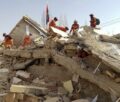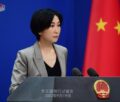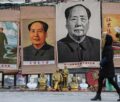Growing China-Pak- Nepal closeness
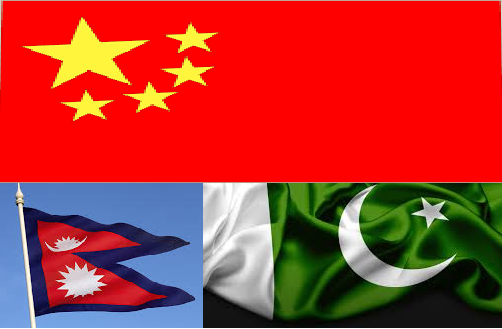
The Galwan valley stand-off between China and India since early May was not an incident in isolation. Its timing has been significant as around this time there has been spurt in Pakistan sponsored militant activities in Kashmir. Also, in June, Nepal launched a fresh offensive by adopting a new territorial map claiming some Indian areas from Uttarakhand as its sovereign territory. All this was not coincidental. India was engaged on all three fronts by Pakistan, Nepal and China.
The 2017 Doklam incursion into Bhutanese territory and the India-China fierce engagement thereof was still fresh when Beijing amassed its forces in the Galwan valley this year to make serious inroads into the Indian territory. What happened next is well known. But after several rounds of dialogue between top commanders, both sides withdrew their forces from some disputed areas, an action which satisfied neither. The dispute goes on with more build up in East Ladakh on both sides.
China is Pakistan’s all-weather ally helping Islamabad with large scale economic and military aid, including men and material help for the ambitious China Pakistan Economic Corridor, CPEC. Beijing has pumped in billions of dollars as aid and loan for infrastructure projects in Pakistan. This has been continuing for a long time to the discomfiture of India but what intrigues the most is that Pakistan has ostensibly increased the level of its interest in Nepal affairs.
Prime Minister Imran Khan tried to reach out to his Nepal counterpart K.P. Sharma Oli with Islamabad making a written request to Nepal’s Foreign office. Whether the two Prime Ministers spoke to each other is not clear, but Islamabad’s attempts to reach out to Oli at a time when he issued the new territorial map and blamed India for his troubles speaks loudly of the growing nexus between the two countries separated by India.
As China’s proximity to Nepal increased after the Communists formed the government in Kathmandu, Pakistan has been making concerted efforts to increase its influence in the Himalayan nation. The then Pakistan Prime Minister Shahid Khaqan Abbasi visited the Nepali capital soon after K.P. Oli took over the reins in February 2018 for the second time. This was first high-level visit to Nepal from Pakistan in 22 years.
Abbasi discussed the J&K issue and the benefits from the Border and Roads Initiative, BRI, of common friend China besides SAARC movement stalled since the 2016 Uri attack by Pakistan sponsored terrorists. Obviously, Islamabad’s regional outreach is to ward off India’s influence with its neighbours.
The Pak-Nepal bonhomie is in sharp contrast to the new lows Nepal has pushed its ties with India under Prime Minister Oli. His diatribe that “plots are being hatched to topple me for releasing the country’s new map and getting it adopted through Parliament” shows a desperate tone.
Whipping up anti-India mood may be a part of his survival mantra. It has not helped in warding off threats to his chair from the dissident camp in the ruling Nepal Communist Party (NCP).
The demand for his resignation as Prime Minister and as party co-chairperson are orchestrated by fellow co-chair person, Pushpa Kamal Dahal, Prachanda, who has a large following in NCP’s apex forum, Standing Committee. To keep his detractors at bay, Oli has been stalling the meetings of the Standing Committee. He also got Parliament session prorogued abruptly to avert a censure motion.
Sensing that the NCP reached the verge of split, China became worried and openly played its card to keep Oli, Prachanda et al united. Its Ambassador held several rounds of talks with the leaders of warring factions besides President Bidya Devi Bhandari.
A diplomat hobnobbing with political leaders of the host country is an unusual spectacle. Well, that is the level of desperation of Beijing which has heavily invested in Nepal to further its geo-political and strategic interests. Analysts believe that Oli had issued the revised territorial map at the behest of China to coincide with its Galwan plan.
Crisis for Oli Government is not new. It tottered once in April too but China saved him by outmaneuvering the Oli detractors. It has proved to be a temporary reprieve though.
No NCP leader, Oli and Dahal including, likes to be seen as instrumental in the party split. Nobody has the courage to face peoples’ ire. It was in 2018 the merger of Oli led CPN (UML) and CPN (Maoist) led by Dahal gave birth to NCP. China has been exploiting this sentiment to pop up Oli in the hot seat.
It is possible that Oli’s fate will be decided by party’s 445-member Central Committee. This body is likely to meet in four months since its constitution is still a work in progress. It should have been done soon after the merger of CPN (UML) and CPN (Maoist). But for reasons unclear it was not done.
Another pointer that Nepal and China are getting closer is the spurt in Chinese investment in the infrastructure projects in the Himalayan nation. Yuan flow increased manifold, particularly after the 2015 blockade following the adoption of new Constitution.
Pakistan’s ISI has been using Nepal for pumping fake currency into India through Birgunj and other porous areas in the Terai region. It also taps the smugglers routes through Bangladesh to push armed militants of all hues into India. Three persons were arrested on July 18 from Bara district with large sums of fake Indian currency. One big catch was notorious gangster Yunus Ansari, who is the son of a former Nepali Minister Salim Ansari. He was arrested last year at the Kathmandu airport along with three Pakistani nationals, three Nepali citizens and fake Indian currency worth 76.7 million. Yunus is said to have close links with the ISI. This arrest puts the spotlight on Nepal – Pak relations.
Early June, Prime Minister Oli Nepal turned to Lord Ram in a bizarre political brinkmanship. “Real Ayodhya is in Nepal, Lord Rama is born at Thori in southern Nepal.”, he declared and accused India of cultural encroachment by “creating a fake Ayodhya.
Well, the invocation brought him no brownie points. Not even his assertion “Valmiki Ashram is also in Nepal and the holy place where King Dashrath had executed the rites to get the son is in Ridi, which is in Nepal” or his question mark: Was it even possible for Lord Rama to travel to Janakpur to marry Sita when there were “no means” of communication.
Politicians love controversies which keep them in headlines. But controversies engineered for short term sweepstakes particularly on matters of faith will have an unsettling effect on the practitioners of the art of the survival. As Oli has learnt. “Let’s listen to the new Ramayana …! Let’s travel directly to Baikunthadham!” Baburam Bhattarai, a former Nepal PM said dubbing the Oli-Speak as outlandish.
Ramayana may prove to be the adhesive for Nepal -Pak ties. Ram’s sons, Lava and Kusha ruled from what have since become Lahore and Kasur in Pakistan’s Punjab province. And there is no dispute whatsoever on this score, at least from India. To the great relief of China!
— By Rattan Saldi
-
Book Shelf
-
 Book Review
DESTINY OF A DYSFUNCTIONAL NUCLEAR STATE
Book Review
DESTINY OF A DYSFUNCTIONAL NUCLEAR STATE
- Book ReviewChina FO Presser Where is the fountainhead of jihad?
- Book ReviewNews Pak Syndrome bedevils Indo-Bangla ties
- Book Review Understanding Vedic Equality….: Book Review
- Book Review Buddhism Made Easy: Book Review
- Book ReviewNews Elegant Summary Of Krishnamurti’s teachings
- Book Review Review: Perspectives: The Timeless Way of Wisdom
- Book ReviewNews Rituals too a world of Rhythm
- Book Review Marx After Marxism
- Book Review John Updike’s Terrorist – a review
-
-
Recent Top Post
-
 NewsTop Story
What Would “Total Victory” Mean in Gaza?
NewsTop Story
What Would “Total Victory” Mean in Gaza?
-
 CommentariesTop Story
The Occupation of Territory in War
CommentariesTop Story
The Occupation of Territory in War
-
 CommentariesTop Story
Pakistan: Infighting in ruling elite intensifies following shock election result
CommentariesTop Story
Pakistan: Infighting in ruling elite intensifies following shock election result
-
 CommentariesTop Story
Proforma Polls in Pakistan Today
CommentariesTop Story
Proforma Polls in Pakistan Today
-
 CommentariesTop Story
Global South Dithering Away from BRI
CommentariesTop Story
Global South Dithering Away from BRI
-
 News
Meherabad beckons….
News
Meherabad beckons….
-
 CommentariesTop Story
Hong Kong court liquidates failed Chinese property giant
CommentariesTop Story
Hong Kong court liquidates failed Chinese property giant
-
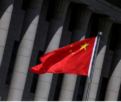 CommentariesTop Story
China’s stock market fall sounds alarm bells
CommentariesTop Story
China’s stock market fall sounds alarm bells
-
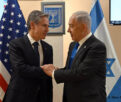 Commentaries
Middle East: Opportunity for the US
Commentaries
Middle East: Opportunity for the US
-
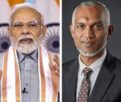 Commentaries
India – Maldives Relations Nosedive
Commentaries
India – Maldives Relations Nosedive
-
AdSense code

















